Are hawthorn and persimmon high in sugar?
Diabetic friends in fact, there is no must not eat the fruit, fruit in the vast majority of fructose, a small amount of glucose, fructose and glucose metabolism has a difference, will be generated in the liver neutral fat, by the liver generated by the protein carriers excluded from the body, but has been free in the blood, but if a large number of eating fruits, glucose will be hoarded, but also cause the blood glucose soaring. Fruits are rich in nutrients, and rich in dietary fiber, as long as the appropriate eating fruits, the impact on blood sugar will not be too great, so diabetic friends do not have to exclude eating fruit, as long as the appropriate food, eat less and more meals, try to choose to eat between meals, in fact, will be better for the control of blood sugar.
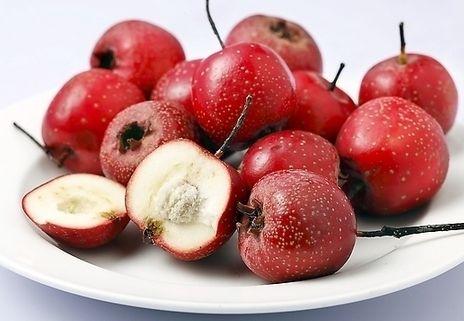
Fruits are indeed suitable or unsuitable for diabetics to consume, and the GI (Glycemic Index) and GL (Glycemic Load) of the food are generally used to determine this. Glycemic Index refers to how fast or slow the food will make one's blood glucose rise in a unit of time, and Glycemic Load refers to how much the factor that makes one's blood glucose rise in a unit of volume is. Therefore, fruits with low GI and GL are more suitable for diabetics. However, persimmons and hawthorn belong to fruits with high GI, so they are not suitable for excessive consumption, but since the nutritional value of the two is good, it is best to consume them in small quantities, not more than 50~70g at a time. You can choose to eat them several times in a day, and consume them in several times to have a smaller impact on blood sugar. Choose to eat between meals, you can also prevent the emergence of hypoglycemia.

However, it is important to note that you should try to choose fresh hawthorn and persimmons to eat, do not buy hawthorn slices, hawthorn fructus, or dried persimmons, persimmons preserves, etc. These are processed foods, and are likely to add more sugar, which in turn, can be detrimental to diabetics. And there are more additives in these foods, which are also bad for overall health.
Can diabetics eat hawthorn?
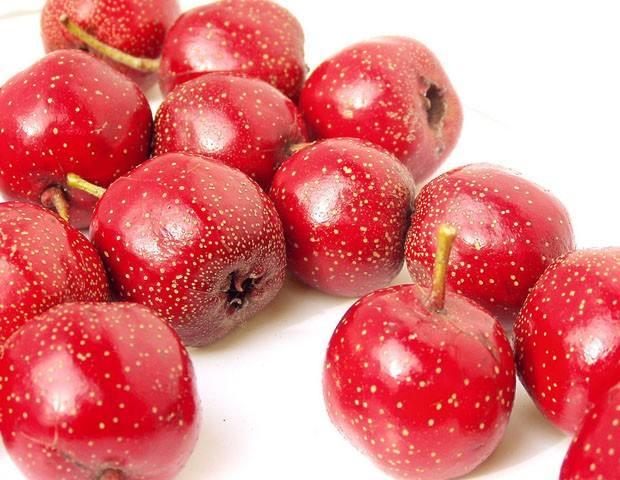
Moderate consumption of hawthorn by diabetic patients can help digestion, lower blood lipids, and also prevent diabetic complications such as cardiovascular and cerebrovascular. Therefore, for middle-aged and old-aged diabetic patients advocate to eat some hawthorn appropriately, and hawthorn porridge is most suitable for diabetes combined with hyperlipidemia patients to eat.
In addition, hawthorn slices and fruit tangerine peel contain a lot of sugar, eating too much will keep blood sugar at a high level, no hunger, affecting eating, and long-term consumption of large quantities will lead to nutritional inaccuracy, anemia and so on. Therefore, diabetic patients should not eat made hawthorn, can eat hawthorn fresh fruit appropriately.
How to eat hawthorn for diabetics
Look at hawthorn in two.
First of all, hawthorn contains high sugar content, 25% of the sugar content makes it cross into the "high sugar" fruit layer. Therefore, for diabetic patients, eating a lot of hawthorn is not suitable. In clinical work, we have encountered some diabetic patients seeking to lower fat, a large number of eating hawthorn, resulting in large fluctuations in blood sugar. In view of this.Diabetic patients who want to eat hawthorn. The daily recommended amount should be no more than 100 grams and should be eaten between meals, or drink hawthorn water after soaking hawthorn in water.
At the same time, it should be noted that after an additional 100 grams of hawthorn can be reduced by half a couple of staple food, in order to achieve a constant total energy. For some diabetic patients with "brittle" blood sugar, self-testing blood sugar before and after eating hawthorn is necessary.
Can diabetics eat persimmons?

Persimmon is good, but many people are not suitable to eat, persimmons in the due to contain 10.8% of sugar, which contains more sugar than the average fruit. And most of them are simple disaccharide and monosaccharide (such as sucrose, fructose, glucose), it is easy to make blood sugar rise after eating. For diabetics, especially those with poor blood sugar control is more harmful. Therefore, diabetics are best avoided.
Persimmon tannins, easy to combine with iron, hindering the body's absorption and utilization of iron, so patients with anemia should be eaten sparingly; at the same time, tannins will also aggravate gastric discomfort, suffering from chronic gastritis and other gastric disorders patients should not eat eat.
Unripe persimmons may prevent diabetes
Unripe persimmons and purple grape skins are foods that are very astringent. Their astringent flavor is brought about by tannins, phytic acid and oxalic acid in the food. These are powerful antioxidants that are beneficial in preventing diabetes and high blood cholesterol.
Experts remind that the antioxidant substances in the skin of grapes only play a preventive role, for patients who already have diabetes should not eat more. Because the composition of grapes contains glucose, consumption can directly make blood sugar rise. It is recommended that patients with stabilized conditions can eat a small amount after meals.
Thus, it seems that diabetics are not allowed to eat persimmons. Diabetics who want to eat fruits can choose tomatoes, kiwis, pomegranates, etc., which have less sugar. Unripe astringent persimmons have the effect of preventing diabetes, and people at high risk of diabetes can eat some.
Hawthorn has high sugar content, 25% sugar content makes it cross into the "high sugar" fruit layer. Diabetic patients should try not to eat hawthorn, especially hawthorn slices made of dried fruit. If they want to eat, they should be advised to consume no more than 100 grams per day and measure their blood sugar before and after eating hawthorn.
Persimmons contain more sugar than the average fruit because they contain 10.8% sugar. For diabetics, especially those with poor blood sugar control is more harmful. Therefore, diabetics are advised to avoid eating them.
This kind of question is often asked, we say that the sugar people dietary principles are firstly to control the total calories, followed by the control of the type, that is, try to avoid foods with high sugar content, the recipients of hawthorn and persimmons specific sugar content I'm not clear, pay attention to eat less, eat between the two menus, generally can be, but if the blood glucose control is very unsatisfactory, don't eat it, as for the control standard, before I have explained, interested can pay attention to.
Thanks; Hawthorn contains 22 grams of carbohydrates per 100 grams and persimmon contains 15 grams of carbohydrates per 100 grams. Both hawthorn and persimmon are high in sugar content. In general diabetics are not allowed to eat fruits. Fruits contain fructose , fructose into the body digestion is easily absorbed. After diabetic people consume fruits, their blood sugar will rise rapidly, which will bring unnecessary trouble and easily cause high blood sugar. In general, fruits are forbidden to eat.
I believe that we are not unfamiliar with hawthorn and persimmon, these two fruits are more common in our life. Since hawthorn and persimmon are both sweet fruits, many people are worried that their sugar content will be very high, especially those who suffer from diabetes have this kind of doubt: can hawthorn and persimmon be eaten in the end? Here are some specifics.
First of all, let's talk about hawthorn. According to Chinese medicine, hawthorn has a sour taste and warm nature, which can eliminate food and strengthen the stomach, move qi and activate blood circulation. In addition, because hawthorn contains triterpene enoic acid and flavonoids, it is also able to lower blood pressure and cholesterol. However, hawthorn contains high sugar content, 25% sugar content makes it cross into the high sugar fruit layer.
Therefore for hawthorn diabetics should try not to eat, if you want to eat, try to choose fresh hawthorn and persimmons to eat, do not buy hawthorn slices, hawthorn fructus bark, or dried persimmons, persimmons preserves, etc., which are processed food, it is likely to add more sugar, which is very unfavorable to diabetic patients.
Let's talk about persimmons. In addition to water, persimmons contain mostly sugar (including sucrose, glucose, fructose, etc.). Persimmons contain 10.8% sugar, which is higher than the average fruit. For diabetics, especially those with poor blood sugar control is more harmful. Therefore, diabetics are advised to avoid eating persimmons.
In short, persimmons, watermelon and other fruits and products with high sugar content should be eaten sparingly to control intake. However, diabetic friends do not have to exclude eating fruits, as long as appropriate consumption, eat small meals, try to choose between two meals, in fact, does not have a great impact on blood glucose control.
Instructor: Zhou Peiru, Chief Nurse, Diabetes Nurse Specialist, Director of Health Management Center of the First Affiliated Hospital of Jinan University, President of the Diabetes Nurse Branch of Guangdong Nurses Association.
If you find this article useful, please like or recommend it to your friends and follow [Medlink Media].
Are hawthorn and persimmon high in sugar?
Hawthorn and persimmon are both sweeter fruits to eat. Some readers asked Chao: Are hawthorn and persimmon high in sugar? Will diabetic people be alright if they eat them?
Answer Sneak Peek:
Hawthorn and persimmons are both high in sugar, and hawthorn has a bit more, but they're not as scary as you might think.
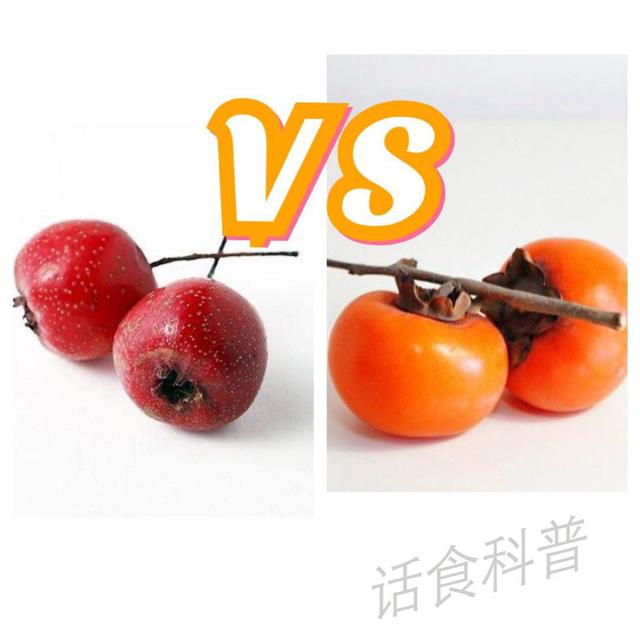
Chao feels that talking about sugar should start with carbohydrates. Carbohydrates in food are divided into two categories: effective carbohydrates that people can absorb and use, such as: monosaccharides, disaccharides, polysaccharides and ineffective carbohydrates that people can not digest, such as: fiber.
Here Word Food will detail the two fruits of theSugar composition, contentand give to give to giveServing Guide。
[Hawthorn]
Hawthorn, also known as Shanlihong, is one of the common Chinese medicines that are used in medicine and food.
Hawthorn has visible nutritional flavor and medicinal properties. Each100gThe fresh fruit contains carbohydrates up to22.1g. The average soluble sugar content of hawthorn fresh fruit in several varieties was about10g, which consists mainly of fructose and glucose [1], is about4-5g. The sucrose, maltose and lactose contents are all very low, which is why hawthorn doesn't taste so sweet.
This is followed by a small amount of dietary fiber in the5.79~8.07g/100gScope. Some of the remaining cellulose, pectin, etc., hawthorn polysaccharides in hawthorn are also monosaccharides, which are important active substances in the body [2].
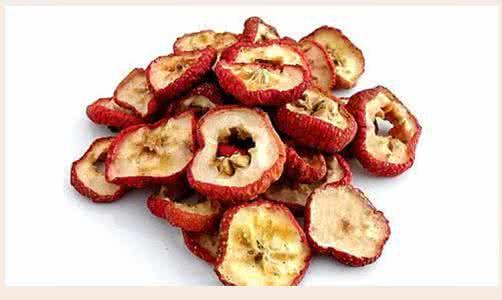
So, although hawthorn is high in sugar, for diabetics, theInstead of increasing the glycemic index, it has a hypoglycemic function because of its other pharmacodynamic effects [3].
Hawthorn is not only colorful and attractive, but also contains a variety of nutrients and health care components, it is high in sugar but also contains protein, dietary fiber, pectin, fat, minerals, and rich in vitamin C, per100gFruit pulp contains up to vitamin C89mg, second only to kiwis and dates, and more than apples17 times higher. Also, rich in calcium, each100gThe flesh of the fruit contains as much calcium as85mg, the crown of fresh fruits [1].
[Persimmon]
Persimmon is a perennial deciduous fruit tree native to China. The ripening season is around October, and its fresh fruits and persimmon cakes are deeply loved by the people.
它per 100gSugar content in fresh fruitHigh 18.5g[4], Persimmon fruit mainly contains saccharides such as sucrose, glucose and fructose. These can cause changes in blood glucose concentration in the body, so diabetics eat them with attention to dosage.
Other nutrients in persimmons are protein0.4gFat0.10gCellulose1.40gVitamin A20.0μgVitamin C30.0 mgVitamin E1.12mgcarotene120.0 μg。
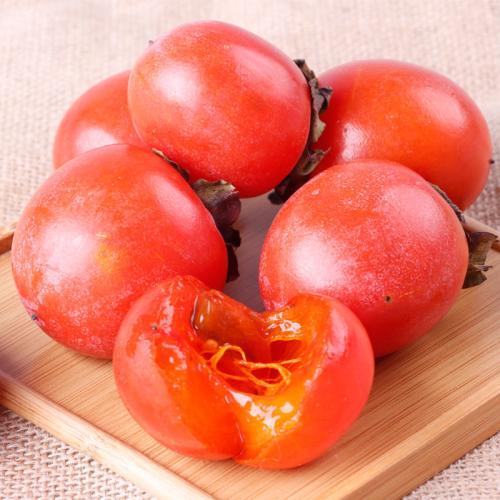
[Summary and Recommendations for Sugar Intake]
Overall, hawthorn and persimmons both fall into the category of high-sugar fruits in terms of carbohydrate content, but they are a little different.
Hawthorn's contains soluble sugars, and the amount that can cause a rise in blood sugar is not high. Persimmons, on the other hand, have sugars that tend to cause changes in blood sugar, so be careful with your intake.
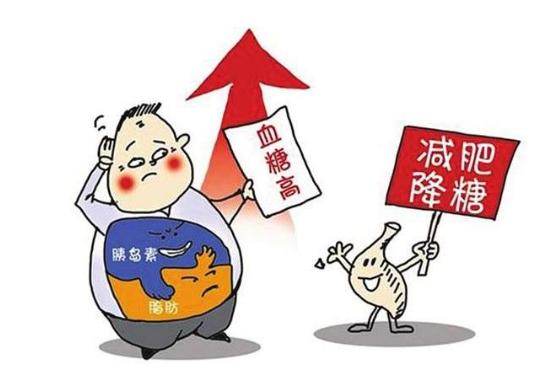
The new version of the Dietary Guidelines for Chinese Residents (2016) proposes for the first time to limit the intake of added sugars, with dailyNot more than 50 gramsIt is best to limit the number of25 grams or lessAdded Sugar. Added sugars are monosaccharides, disaccharides or sugar alcohols added to food during cooking and processing, etc. Excessive intake of added sugars increases the risk of obesity, diabetes and other diseases.
Hence the word food suggestion:Persimmons, watermelon and other such high sugar content fruits and products should be eaten sparingly to control the intake.
bibliography
[1] Lu Dongfei. Nutritional value of hawthorn and its utilization[J]. Agricultural Products Processing,2012,(08):30-31.
[2] Deng Xukun, Jiang Shanqing, Mu Jun, Duan Huan, Shu Guangwen, Chen Lüyi. Compositional determination of hawthorn polysaccharides and its monosaccharide fraction analysis[J]. Journal of Central South University for Nationalities (Natural Science Edition),2017,36(03):52-56.
[3] Chemical composition of hawthorn and its health functional properties[J]. LI Gang,LIANG Xinhong,GE Xiaohong. Jiangsu Seasoned Foodstuffs. 2009(06).
[4] HD Hill. Nutritional value of persimmon and its utilization[J]. Shanxi fruit tree,2015,(01):10-12.
Author: Xie Miaojia Zhao Lichao

Hawthorn, also known as Shanli fruit, Shanli red, is China's unique medicinal and food fruits, the fruit can be eaten raw or as dried fruit cake, dried can be used in medicine, with lowering blood lipids, blood pressure, cardiac, anti-arrhythmia and other effects, but also to strengthen the spleen and open up the stomach, eliminating stagnation of food, blood phlegm good medicine;
Persimmon is cold in nature, contains a large number of vitamins A, C and ellagic acid, has the effect of nourishing the lungs and stomach, clearing the dryness and fire, lowering blood pressure and stopping bleeding, preventing cardiovascular disease, clearing heat and sliding intestines, moistening the lungs and generating fluids. It is suitable for the treatment of hypertension, chronic bronchitis, arteriosclerosis, hemorrhoids and blood in stool, constipation and other conditions.
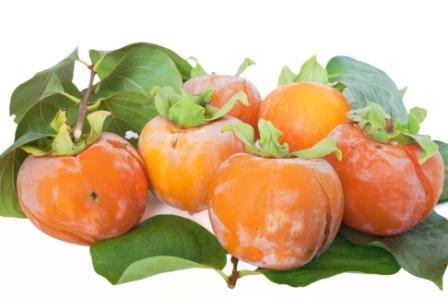
So, are hawthorn and persimmon high in sugar?
Let's talk about hawthorn first. The sugar content of hawthorn varies greatly according to varieties and maturity, etc. Fresh hawthorn is 22.1%, which is high in sugar content among fruits, and the main sugar is fructose. Here is the list of common fruits with sugar content:
1, sugar content of 4-7% - watermelon, blancmange, strawberry, loquat .
2, containing 8-10% sugar - duck pear, lemon, plum, cherry, cantaloupe, grapes, peach, pineapple .
3, sugar content of 9-13% - apples, apricots, figs, oranges, grapefruit, fresh lychee, fragrant fruit .
4, sugar content 14-19% - persimmon, banana, fresh cinnamon, pomegranate, prunes, sugar cane juice .
5、Sugar content of 20% or more: fresh hawthorn 22.1%, begonia 22.4%, fresh jujube 23.2%, etc..
According to the above, persimmon is also high in sugar content. Therefore, persimmon has high nutritional value, while hawthorn is not only sweet and sour, suitable for raw food but also has high nutritional and medicinal value. However, it must be consumed in moderation and should not be eaten in excess.
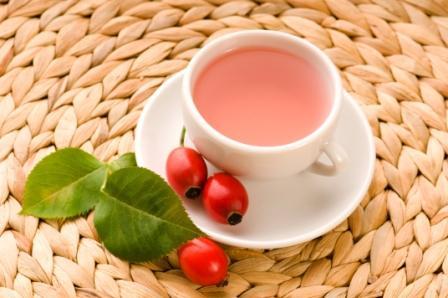
Eating persimmons and hawthorn requires the following contraindications:
1, persimmon is best not to eat with crab, fish, shrimp. Persimmon tannins encountered in seafood in the high protein, not easy to digest easy to precipitation and coagulation, and easy to solidify into a block, that is, the stomach persimmon stone.
2, fasting should not eat persimmons. Because persimmons contain more tannins and pectin, in the case of fasting, they will be formed under the action of gastric acid in varying sizes of hard lumps, if these hard lumps can't pass through the pylorus to reach the small intestine, it will be retained in the stomach to form a gastric persimmon stone. If the stone cannot be discharged naturally, it will cause obstruction of the digestive tract and symptoms such as severe pain in the upper abdomen, vomiting, and even vomiting blood will occur.
3, diabetics try to eat less persimmons and hawthorn. The reason is obvious, they contain high sugar.
4, hawthorn small food contains much sugar, should eat less. Hawthorn consume too much will damage teeth, hawthorn avoid with ginseng, seafood together.
I'm not a nutritionist or a doctor, just a retired worker. Talk about your own feelings. Taste-wise, I find persimmons to be sweeter. It seems that it should contain more sugar. The taste of hawthorn is mainly acid-based, do not feel very sweet, seems to contain less sugar. The answer is not very scientific. It is just a personal feeling.
This question and answer are from the site users, does not represent the position of the site, such as infringement, please contact the administrator to delete.